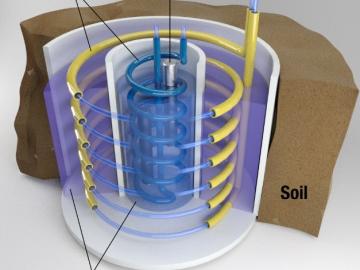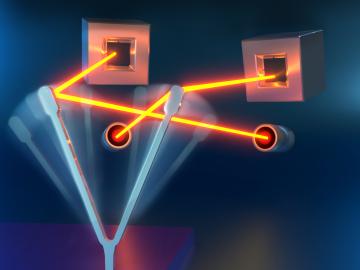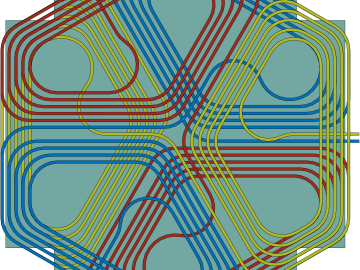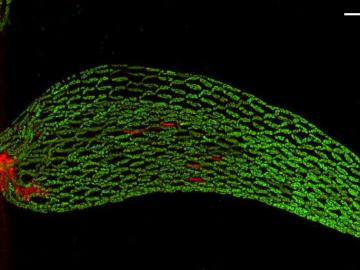
Filter News
Area of Research
- (-) Energy Science (92)
- (-) Materials (52)
- (-) National Security (6)
- Advanced Manufacturing (4)
- Biology and Environment (38)
- Building Technologies (2)
- Computational Biology (1)
- Computational Engineering (1)
- Computer Science (4)
- Electricity and Smart Grid (1)
- Energy Sciences (2)
- Functional Materials for Energy (2)
- Fusion and Fission (5)
- Fusion Energy (1)
- Isotope Development and Production (1)
- Isotopes (6)
- Materials for Computing (10)
- Mathematics (1)
- Neutron Science (33)
- Nuclear Science and Technology (6)
- Supercomputing (26)
- Transportation Systems (2)
News Type
News Topics
- (-) Biomedical (3)
- (-) Energy Storage (37)
- (-) Environment (27)
- (-) Irradiation (1)
- (-) Microscopy (14)
- (-) Nanotechnology (18)
- (-) Neutron Science (11)
- (-) Security (2)
- (-) Space Exploration (3)
- (-) Transportation (36)
- 3-D Printing/Advanced Manufacturing (40)
- Advanced Reactors (5)
- Artificial Intelligence (4)
- Big Data (5)
- Bioenergy (7)
- Biology (6)
- Biotechnology (1)
- Buildings (18)
- Chemical Sciences (12)
- Clean Water (4)
- Composites (11)
- Computer Science (16)
- Coronavirus (6)
- Critical Materials (9)
- Cybersecurity (5)
- Frontier (2)
- Fusion (5)
- Grid (18)
- High-Performance Computing (4)
- Hydropower (2)
- Isotopes (4)
- ITER (1)
- Machine Learning (4)
- Materials (47)
- Materials Science (37)
- Mathematics (1)
- Mercury (1)
- Molten Salt (2)
- National Security (4)
- Nuclear Energy (8)
- Partnerships (3)
- Physics (7)
- Polymers (10)
- Quantum Computing (2)
- Quantum Science (2)
- Simulation (2)
- Statistics (1)
- Summit (1)
Media Contacts

A novel approach developed by scientists at ORNL can scan massive datasets of large-scale satellite images to more accurately map infrastructure – such as buildings and roads – in hours versus days.

Rigoberto “Gobet” Advincula has been named Governor’s Chair of Advanced and Nanostructured Materials at Oak Ridge National Laboratory and the University of Tennessee.

Oak Ridge National Laboratory researchers created a geothermal energy storage system that could reduce peak electricity demand up to 37% in homes while helping balance grid operations.

To better determine the potential energy cost savings among connected homes, researchers at Oak Ridge National Laboratory developed a computer simulation to more accurately compare energy use on similar weather days.

Researchers at ORNL and the National Renewable Energy Laboratory took inspiration from flying insects to demonstrate a miniaturized gyroscope, a special sensor used in navigation technologies.

ORNL researchers created and tested new wireless charging designs that may double the power density, resulting in a lighter weight system compared with existing technologies.

A team of scientists found that critical interactions between microbes and peat moss break down under warming temperatures, impacting moss health and ultimately carbon stored in soil.

Researchers at the Department of Energy’s Oak Ridge National Laboratory have received five 2019 R&D 100 Awards, increasing the lab’s total to 221 since the award’s inception in 1963.

Researchers at Oak Ridge National Laboratory proved that a certain class of ionic liquids, when mixed with commercially available oils, can make gears run more efficiently with less noise and better durability.

A detailed study by Oak Ridge National Laboratory estimated how much more—or less—energy United States residents might consume by 2050 relative to predicted shifts in seasonal weather patterns


